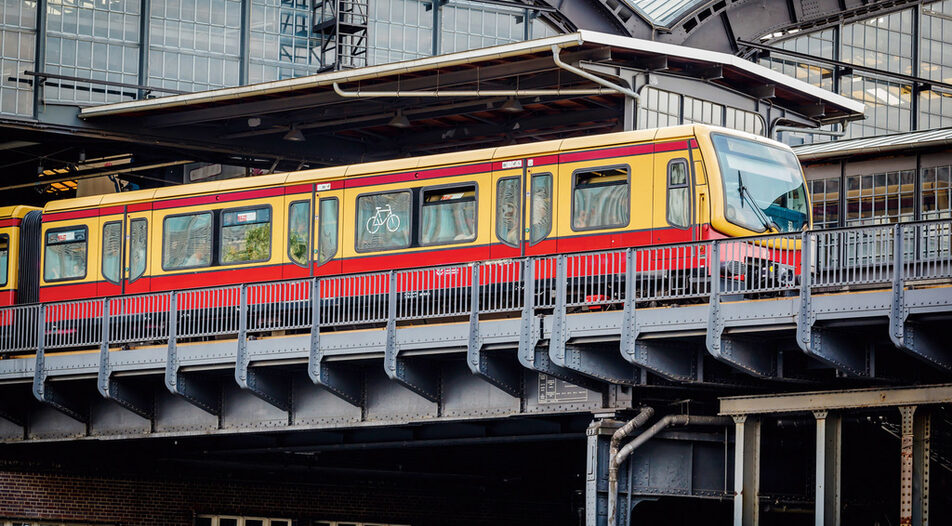- Plovdiv Municipality has had plans for an urban railway, or S-Bahn as the Germans call it, for 30 years.
- However, their implementation now depends on state-run National Railway Infrastructure Company (NRIC), and this is not the best choice
If you think Plovdiv cannot dream, think again. The city has had a dream for green public transport since 1892 if we look at the first project for a tram line in the archives. And it means that Plovdiv's dream precedes Sofia trams by almost a decade. The idea expanded and in 1942 German architect Hermann Jansen proposed six tram lines to cross the city.
However, the city has understood that these trams wouldn't arrive and had to reorient. For the past 30 years, Plovdiv has still aimed at developing an ecological rail transport, but this time in the form of an urban railway network that would connect all neighbourhoods of the city as well as eleven villages around it.
The idea now seems more feasible to the city government, as it does not require new routes and trams. Instead, it can use the existing railway network. Most of it has been built, but there is also preserved undeveloped land for railways. In the past, freight trains used it. Despite trees growing in the tracks now and houses surrounding them, the railway lines can be brought back to use.
The urban railway network will now be included in Plovdiv's general development plan. This is the first step needed to create this type of public transport in Bulgaria's second biggest city. However, this step alone would not make Plovdiv's dream come true. And it's not because the city doesn't want it but because it depends mostly on NRIC.
And in case you don't know what's the problem with this state-run company is - NRIC has been building a single railway line some 400 km in length - from Sofia to Burgas, ever since 2013.
Plovdiv's most important project
Plovdiv's idea has been resurrected just in time. The issue of urban railways has received a strong boost as it has become one of the priorities of the European Commission as a transport solution in the EU's long-term goals. In the last two programming periods of the EU (2007-2014; 2014-2020), Bulgaria's government invested the EU funds it received in the construction of Sofia metro and now three more cities want the same. Burgas, Varna and Plovdiv have real possibilities for urban railways to be built.
The required amendment to Plovdiv's general development plan drafted by Bulphan company has not yet been voted on by the municipal council but the expectations are the city railway project would be included in its agenda.
According to civil initiative group "For Public and Rail Transport," an urban railway would reduce the growing congestion in and around the booming city and halve the travel time between nearby villages.
"It will determine how the city will develop over the next 20 to 30 years," says Dobromira Kostova, a municipal councillor from Democratic Bulgaria political alliance, part of the new government coalition that took office earlier this week.
S-Bahn definition
"In our case, we talk about a real urban railway, not about trams or trains that run on the city's streets. We talk about mini trains that would connect the city to Plovdiv airport, to the industrial zones around it, to the nearby villages now served by trains travelling to Asenovgrad, Sofia, Burgas, Panagyurishte, Karlovo and Stara Zagora. The existing railway route can be used and improved," says Dimitar Ahryanov, chief architect of Plovdiv municipality.
The difference between trains running on an urban railway and those travelling on high-speed railways is that urban trains take passengers from all stations, not just from the major ones. According to an analysis by the designers of the project, several new railway tracks have to be built to connect the Central Railway Station to Filipovo neighbourhood, Filipovo to Skutare, Trakia to Skutare. Also, a direct connection between Trakia station and Filipovo station should be built.
Trains on the urban railway are planned to run at an average speed of 25 km/h, and there will be dedicated bus lines to serve its stations. In addition, the system must include transfer points for car parks operating under the Park & Ride system.
Deaf tracks
Funding for the project can be provided under the Green Deal, according to information given to municipal councillors by the Ministry of Environment and Water.
The idea can materialize with the help of a joint venture between the municipality and NRIC, which will develop a working project. However, the issue of finding an operator of the future urban railway remains, as the municipality does not have good experience with concession contracts in the transport sector.
The former caretaker transport minister and long-time director of NRIC Hristo Alexiev has not been optimistic and specific about the issue of developing an urban railway in Plovdiv. He said the company has been focused mainly on the development of Plovdiv railway junction that will bring to completion the construction of the railway line from Sofia to Burgas. This project is connected to the investment proposal for the construction of a railway connection between Krumovo station and Plovdiv airport.
"We are working in this direction. We are doing things step by step," he told Capital Weekly. Having in mind how inefficiently NRIC is run, however, Plovdiv can hardly expect to have anything more than good intentions for an urban railway by 2030.
- Plovdiv Municipality has had plans for an urban railway, or S-Bahn as the Germans call it, for 30 years.
- However, their implementation now depends on state-run National Railway Infrastructure Company (NRIC), and this is not the best choice
If you think Plovdiv cannot dream, think again. The city has had a dream for green public transport since 1892 if we look at the first project for a tram line in the archives. And it means that Plovdiv's dream precedes Sofia trams by almost a decade. The idea expanded and in 1942 German architect Hermann Jansen proposed six tram lines to cross the city.












